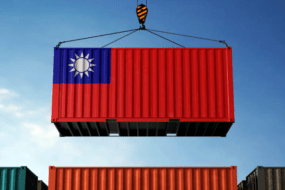- Home
- Trade News
- 10 steps to expanding your bus ...

Businesses today are looking to expand their operations globally in order to tap into new markets and gain a competitive advantage.
For instance, Vietnam is emerging as one of the most highly desirable investment destination for US businesses. Among the elements that make Vietnam a prime location are its talented and affordable labour force, good infrastructure, stable government, safe environment, and free trade agreements in this uncertain time. Read more about why Vietnam is attractive to US businesses here. You can also explore Vietnam’s top import and export goods in our blog resources.
However, expanding businesses globally comes with its own set of challenges and risks. This is why it is vital for companies to carefully plan and prepare for their expansion. In this article, we will take a look at 10 key steps businesses should take in order to expand their operations successfully into global markets.
Research the target market
Before expanding your business globally, it is critical first to research the target market. This includes understanding the economic conditions, consumer preferences, and regulatory environment of the country or region you are looking to enter. Market research will give you a better idea of whether or not your products or services will succeed in the new market.
Create a business plan
A business plan is essential for any business, but it is imperative when expanding into the global market. Your business plan should outline your new market’s goals, strategies, and financial projections, and this will give you a roadmap to follow as you enter and expand your operations in the new market.
Outlining your goals, strategies, and financial projections in a business plan will help ensure your success as you enter and expand your business in a new market. This roadmap will help guide your decisions and keep you on track as you navigate the challenges of operating in a new market.
Develop a market entry strategy
There are a few different physical ways to enter a market, each with its advantages and disadvantages. The most common ways to enter a market are through a subsidiary, joint venture, or franchise.
Subsidiaries are companies that are wholly owned and operated by another company. Although this can also be the most expensive and time-consuming option, it is where a company can have the most control over its operations in a foreign market.
Joint ventures are companies that are jointly owned and operated by two or more companies. This can be a good way to share the risk and costs of entering a new market. Still and all, it can also lead to disagreements and conflicts between the companies.
Franchises are companies owned and operated by an individual or company with the rights to use the name and trademarks of another company. This can be an excellent way to get started in a new market quickly and with relatively little expense. Despite that, franchises may have less flexibility and autonomy than other types of businesses.
Register your business and obtain the necessary permits
Before you can start doing business in a new market, you will need to register your company and obtain the necessary permits and licenses. This can be a complicated and time-consuming process, so it is vital to start early. You will also need to ensure that your company complies with all the new market regulations.
Depending on the nature of your business, you may need to obtain special permits or licenses. For example, you must get a food license if you plan to sell food products. There may also be restrictions on where you can conduct business. For example, you may not be able to set up a stall in a busy market if you do not have the proper permits. The best way to find out what you need to do is to research the specific requirements of the new market.
Build a local team
It is critical to have a local team in place when expanding your business globally. This team will carry out your market entry strategy and manage your day-to-day operations in the new market. They will also be able to provide valuable insights into the local market conditions.
Having a local team in place will help ensure that your expansion into the new global market is thriving. The team will be able to provide valuable insights into the local market conditions and help you manage your day-to-day operations.
Establish your brand
When expanding your business globally, creating a solid brand identity that will resonate with local consumers is essential. This includes developing a unique visual identity for your brand, as well as creating awareness for your brand among the target market. Establishing a strong brand presence in a global market will help you to compete against the established players and attract new customers.
There are a few key things to keep in mind when establishing your brand globally:
- create a strong brand identity that will resonate with consumers
- generate awareness for your brand among the target market
- ensure that your branding is constant throughout all mediums
- consider localising your branding to appeal to the specific market
Keep in mind to maximise the use of technology as it is one of the best ways to reach a global audience. This includes using online tools such as social media, internet marketing, and online marketplaces to sell products and services.
Building partnerships will also assist you in establishing your brand. This can help you gain access to new markets and benefit from other organisations’ expertise.
Launch your products or services
After establishing your brand and building a local team, you can launch your products or services in the new market. This is an important milestone for any business expanding into global territory.
Launching your products or services in a new market is a significant step for any business expanding its operations. By establishing your brand and building a local team in the new market, you can make a smooth transition and ensure that your products or services are well-received.
Monitor and adjust your operations
Monitoring your sales, measuring customer satisfaction, and tracking your financial performance once you have launched your products or services are of value. This allows you to identify any areas that need improvement and make the necessary adjustments. You can ensure that your business runs smoothly and efficiently by constantly monitoring your operations.
Evaluate your expansion
After you have been operating in the global market for a period of time, it is crucial to evaluate your expansion. This will help you identify what has been working well and what areas need improvement. Some factors you may want to consider include the following:
- How well have you been able to penetrate the market?
- What is your market share?
- What is the growth rate of your sales?
- Are you meeting your financial goals?
- What is the feedback from your customers?
- Have you been able to build a strong team in the new market?
Expand into new markets
After successfully expanding into one new market, you can then look to expand into additional markets globally. This will help you grow your business even more and tap into new markets you may not have considered. This type of expansion can be a great way to help your business reach its full potential.
Expanding a business globally can be a complex and challenging process. However, by following these 10 steps, you can increase your chances of success.
You will need to have access to global market data to grow your business, and TradeData.Pro is exact tool for that.
Find the exact product you are interested in here at https://tradedata.pro/trade-database-demo/
Check out this post to learn more about entering a new market and how to utilise TradeData.Pro.
If you’re looking for more info on Russia oil exports and imports, you may check out TradeData.Pro’s detailed shipping data here.
If you want to know more about how you can take advantage of export and import data in trade and business, check out our blog resources.
To find out more about accessing a new market, you can check out this article which shows you how to use TradeData.Pro to access Global Trade Markets: https://blog.tradedata.pro/say-hello-to-our-new-release-of-tradedata-pro/
The most trustable and reliable source for Trade Data.
TradeData.Pro is proudly made in Singapore. Singapore has been one of the world’s most politically stable countries, with an open and trade-driven economy. TradeData.Pro is presented by CIC, a government-linked company in Singapore CIC is a Join Venture of Zall Smartcom, SGX and GeTS.)
Since the launch of TradeData.Pro in 2018, TradeData.Pro has received overwhelmingly positive remarks from market. This is because TradeData.Pro has wide coverage, low cost, and fast response. There are many leading companies from different industries that have subscribed to TradeData.Pro.
TradeData.Pro was awarded with Singapore Quality Class in 2020 and Stevie Award Gold in 2021. Businesses need information to reveal trends, identify market opportunities, track competitors buyers and suppliers, and better understand supply chain potential.
Finding these critical data has traditionally been challenging. But this information do exist, but as part of government import and export filing requirement. The detailed shipment information which are within these filings constructions the core of the global trade.
TradeData.Pro has gathered and packaged these information as business intelligence. Our solution helps companies understand the flow of goods across borders and features the world’s largest searchable trade database. We do the heavy lifting for you by reviewing, standardising, and cleaning data, then delivering in an intuitive format.
Vietnam has been the hottest industry lately, to stay updated on Vietnam, you can view all these information on Vietnam in here on our platform: https://data.cic-tp.com/asia-trade-data/vietnam-import-export-data
Find the exact product you are interested in here at https://tradedata.pro/trade-database-demo/
To find out more about accessing a new market, you can check out this article which shows you how to use Trade Data Pro to access Global Trade Markets: https://blog.tradedata.pro/say-hello-to-our-new-release-of-tradedata-pro/
Learn how TradeData.Pro works by watching the video below! View here on Youtube as well: https://youtu.be/QQ9wG-CesI8
Business Economy Export Future Global Import International Trade Markets Opportunities Prices Trade Data Pro Worldwide
Recent Posts
Archives
- June 2025
- May 2025
- April 2025
- March 2025
- February 2025
- January 2025
- December 2024
- November 2024
- April 2024
- March 2024
- January 2024
- December 2023
- November 2023
- October 2023
- September 2023
- August 2023
- July 2023
- June 2023
- May 2023
- April 2023
- March 2023
- February 2023
- January 2023
- December 2022
- November 2022
- October 2022
- September 2022
- August 2022
- July 2022
- June 2022
- May 2022
- April 2022
- March 2022
- February 2022
- January 2021
Categories
Recent Post
Indonesia Exports: Sunny Outlook Despite Coal, US
- June 30, 2025
- 9 min read
Taiwan Exports: Hitting Record Highs in Challenging
- June 30, 2025
- 7 min read
Forecasting a Brighter Outlook for Chile Imports
- May 30, 2025
- 8 min read
All Tags
Agriculture Automotive Brazil Business Business Opportunities Buyers China Coffee Commodities Crops Ecommerce Economic Economy Electronics Energy Environmental Europe Export Exports Future Garments Global Import India Industries International Trade Leads Leads Generation manufacturing Markets Opportunities Pharmaceuticals Prices Rice Russia Supplier Textiles Trade Trade Data Trade Data Pro Turkey Ukraine United States Vietnam Worldwide








